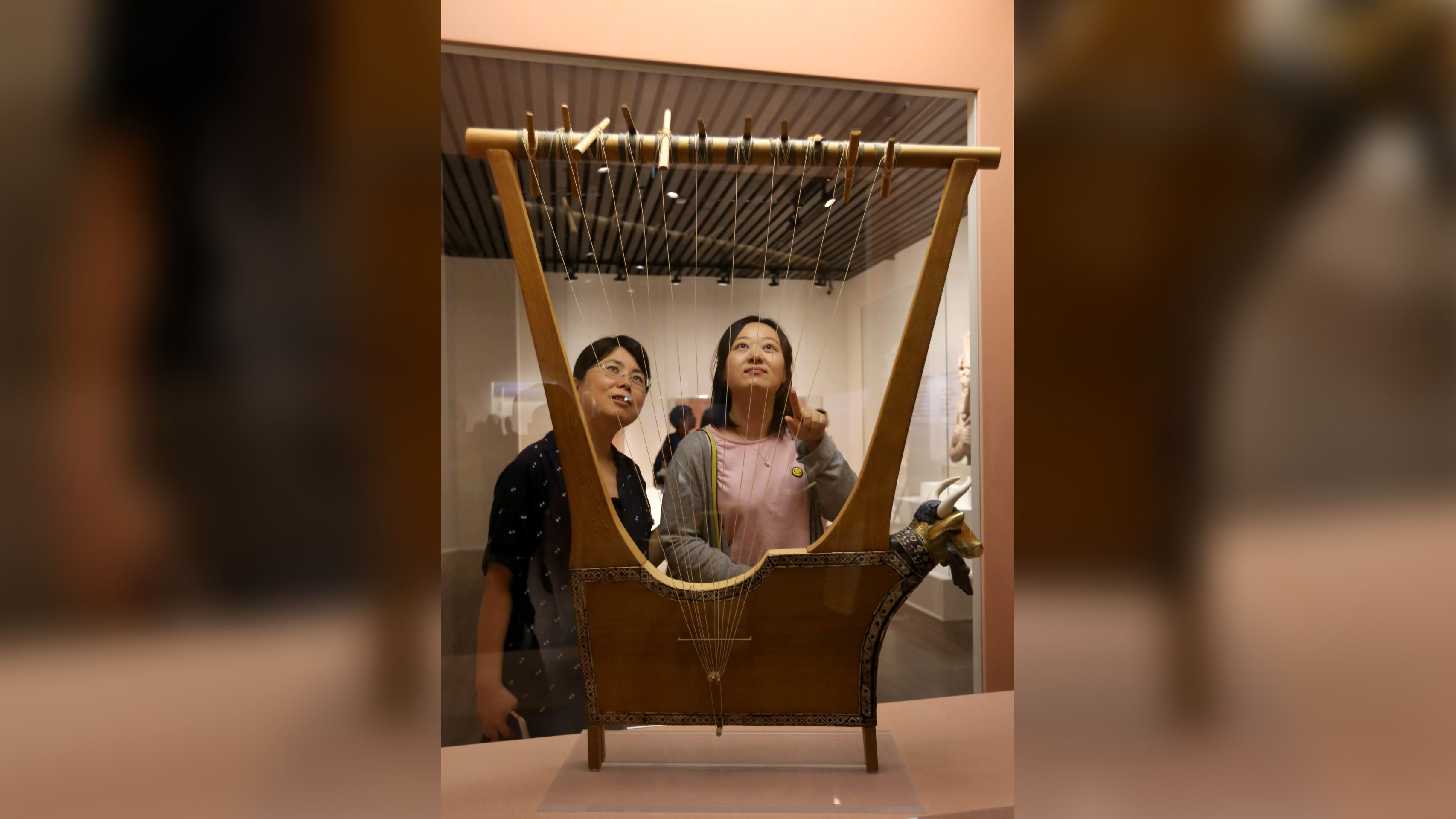
Name: Queen Puabi's lyre
What it is: A decorated wooden harp or lyre found in an elite grave
Where it is from: The Royal Cemetery at Ur, in what is now southern Iraq
When it was made: Circa 2600 to 2400 B.C.
What it tells us about the past:
This musical instrument was found in the 1920s by British archaeologist Sir Leonard Woolley during excavations at the Royal Cemetery at Ur, an ancient city in Mesopotamia that is now part of Iraq.
The artifact, called Queen Puabi's lyre, is one of four lyres that Woolley discovered in one large, elite tomb; the others have been dubbed the golden lyre, the bull-headed lyre and the silver lyre. At about 4,500 years old, these harps are the world's oldest stringed instruments ever discovered.
Queen Puabi's lyre was made of wood, most of which decayed over the millennia. During excavations, Woolley filled the depression left by the rotted wood with plaster to preserve as much of the instrument as possible. The lyre, which is now on display at the British Museum in London, is a reconstruction that consists of wooden panels, strings, 11 gold-headed pegs and the original decorations.
Along the panels, lapis lazuli (a blue semiprecious stone), shell and red limestone were set in bitumen — a sticky, black substance used as mortar. These designs included a lion-headed eagle, gazelles and leopards. A gold bull's head graced the front of the lyre, and its beard, hair and eyes were made of lapis lazuli.
As reconstructed, Queen Puabi's lyre is about 3.7 feet (1.1 meters) tall, 3.1 feet (1 m) across the top, and just 2.8 inches (7 centimeters) wide.
The attribution of the tomb to Queen Puabi comes from the discovery of a cylinder seal with her name on it. Her status as a queen is assumed based on the opulence of the tomb, which was filled with gold and silver objects. Puabi's remains were discovered on a platform surrounded by the remains of her presumed attendants. Little else is known about her life, though.
Woolley also discovered the skeleton of a woman lying against the lyre and reported that her hand bones were exactly where the strings would have been. Because there were several skeletons in the tomb, though, it is not clear if this person was Queen Puabi herself or one of her attendants who likely had been sacrificed upon her death.
All four of the instruments that Woolley found are box lyres with similar decorations. Based on the placement of the lyres in the tomb, the ancient Mesopotamians may have played these instruments at Queen Puabi's funeral.
In some ways, these ancient instruments were like modern guitars: Each string would have produced a different note when plucked or a chord when multiple strings were plucked together, and they could be tuned by tightening and loosening the strings attached to the top pegs.
These lyres from Ur show that the Mesopotamians had musical technology that was cutting edge at the time.







